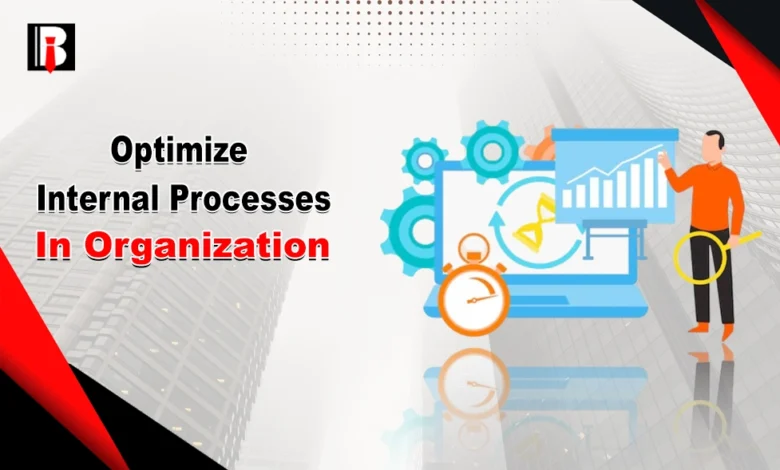How to Optimize Internal Processes in an Organization

Every organization wanna be the top-notch business model in its industry. For that, it mainly works on its product and marketing campaigns. However, the most essential factor for improving your organization’s scalability is optimizing its internal processes.
You have to focus on what matters the most because it will help you cut costs, manage employee task management, and save a lot of time. Internal processes can be restructured, sharpened, and optimized. And that’s where the often underappreciated discipline of System Ops steps into the light.
System Ops, or Systems Operations, isn’t about flashy upgrades. It’s about discipline. It’s about building a foundation that functions with precision.
If you are also one of them, then nothing to worry about anymore. I am writing this blog to explain how to optimize the internal processes of an organization.
Keep reading!
Quick Shortcut Headlines
What are Internal Processes?
Internal processes are actions and tasks necessary to support efficient business growth without the involvement of any external partners. These actions are very necessary to cover the daily tasks and processes of the company because they help identify the areas that need improvement.
When designing your internal processes, it is essential to understand the potential of each employee and ensure that they are satisfied with the workflow. For that, you have to assign every person a task according to their potential. These internal processes can be designed by the manager or even the company’s CEO.

How to Optimize Internal Processes in an Organization – Top Tips
Here are the 5 essential ways you have to take for optimizing your organization’s internal processes.
Perform an Audit
It is clear that improving internal processes is totally about what is happening inside your company, and the best step you can take is to perform an audit. Keep a record of how one worker’s responsibilities relate to those of another, and in all operations.
Another thing to focus on is how you store your data and whether it’s centralized in a secure location. You’ll need to examine your information management plans more closely to identify the primary inefficiencies in your current processes.
Refining of Processes
Once you have audits, all the inefficiencies are in front of you. Now, you need to research the specific advancements required in your internal processes. For that, you have to clear your SOPs because these are the detailed instructions on how the processes are gonna get completed.
Consider the broader issues, such as slowness and congestion, as well as any problems that are specific to your group or team. Check to see if the current mechanisms are sufficient for your processes and how work is allocated. Even if there isn’t an apparent reason, you should keep track of which tasks are giving your team the most trouble.
Set clear Goals
All processing goals should be clear and easy to track. To improve your internal processes, consider applying the Six Sigma method, which comprises two data-driven methodologies. The steps “define, measure, analyze, Design and verify ” (DMADV) are used to improve processes.
Managers, team leaders, and other significant people should develop growth goals that are positive and focus on helping employees instead of penalizing them. Providing employees with information on how to adopt advanced methods instead of conventional ones is an excellent way to prepare for challenges that may arise.
Automation
Keep in mind that whatever the size of your organization is, it is necessary to automate repeated tasks such as emails, backups, support functions, content posting, and others. There are many cases in which these processes can be automated, like automating the payment invoicing and automating the follow-up emails to repeated customers.
You have to invest in this automation because, in the long run, it is gonna give you very valuable benefits. By automating these tasks, your staff can concentrate on other important tasks, resulting in saving you a lot of time and focusing on innovations.
Track processes
As a business gains experience with time, it learns important things that help it run smoothly. As time goes on, every group learns more about itself, either by sharing what they know or by working together and discovering new things. Knowledge management tools let teams collect this information about processes and organise it.
Team members may be operating with divided information if a company doesn’t have a shared knowledge base. This can make everything inside the company take longer. It’s really important to set guidelines for how to get, sort, and judge information regarding how things are done currently.
You can use this to learn about problems that need to be fixed right away, work, and who is in charge of what.
Tracking Internal Processes
Maintaining a record of internal processes within your organization is a crucial step in achieving a successful business approach. You must measure precisely how well your internal processes are going. For that, you have to track multiple time frames, such as the time it takes to market a product, the timeframe for new products and services, etc.
This record will enable you to make informed, effective future decisions for your business related to employment and product manufacturing. It will allow you to implement actionable changes to your operations, ultimately benefiting your organization.
You must use a balanced scorecard (BSC), which will cover four perspectives:
- Customer
- Financial
- Innovation
- Internal processes
Summing Up
For an organization to grow and be able to handle more work, it is important to improve its internal processes. Businesses can improve efficiency, save costs, and establish great customer relationships by focusing on important areas like operation management, customer management, regulatory compliance, and innovation processes.
By putting these internal procedures first, businesses may boost productivity and keep up with industry standards. In the end, a well-optimized internal process not only helps with day-to-day tasks but also provides long-term success in today’s competitive market.




